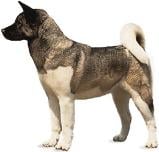
This is a placeholder text
Group text
by Koots on 13 February 2017 - 18:02
I saw a good example of this when training with a new police K9. This dog had nice prey drive, good nerve, but was bite trained what I called the "quick and nasty" way. This dog focused everything into the sleeve, so much so that after the first bite I gave him, I slipped the sleeve (dog was backtied with handler beside him) and the dog was killing the sleeve. I walked behind the dog and lifted him up by the tail, which only made him want to kill the sleeve more. The sleeve was this dog's "safe zone", to the exclusion of any other "threat" around him. We taught the dog, through re-training and multiple-sleeve work, to realize that the fight came from the man, not the inanimate sleeve. This dog had good fight drive, so it was not too hard to get him to re-focus on the man and get him to realize it was the man who was the source of his fight. It just took some time, thought, and use of the dog's innate drives to turn him around and make him suitable as a K9.
by susie on 13 February 2017 - 19:02
A trained dog ( not screwed up ) should be eager to work, just because it´s fun, not because the helper is dancing for him....
In case you have to animate a trained dog "something was left behind at the vet" - genetics?
I think so.
by duke1965 on 13 February 2017 - 19:02
I have clear opinion myself en even you (koots) write ...it also takes proper drives, that is where I am mainly
also if you have a dog that is willing to attack and/or kill the still sleeve I would say that dog is opposite of what im talking about
by Koots on 13 February 2017 - 19:02
Nature or nurture...
I think that you can create the condition that the dog waits for the helper to initiate, especially if that dog is not very high drive and it's foundation training exacerbated this.
IF the dog has the drive (type and level) it shouldn't be too hard to modify it's behaviour. If the dog does not have the proper drives then you can only do so much with him/her.
With my dog, the last thing I would want to do before entering the trial field for phase 'C' is to "amp him up" as it may make it more difficult for the control portion of the exercises - he does not need any 'working up'.
Duke - what did you see in this dog, it's drives for you to be interested in it. Did you get this dog as a green dog to resell?
by duke1965 on 13 February 2017 - 19:02
by vk4gsd on 13 February 2017 - 20:02
Not sure how passive helper can stimulate a well socialised green dog to work unless the dog is a nervebag fearful nut job with mental problems.
Why should a sane green dog go into drive because someone is standing near it passively?
by susie on 13 February 2017 - 20:02
A "trained" dog ( used to helper and sleeve ) that needs a "wake up call" lacks genetics in my opinion.
The only exception: no trigger ( like a sleeve ) for a mainly prey trained dog - this dog will need to learn new stuff...but a good dog should learn fast.
by susie on 13 February 2017 - 20:02
Not "green", VK, "foundation trained" - in my world that means "used to bite a sleeve" ( or hidden sleeve ).
Think about your dog - do you need to wake him up in case there is a decoy standing in front of him wearing a sleeve / hidden sleeve?
Edit: This is the main problem we face in training / titling: Some dogs will work and title, but only after "waking them up" prior to the trial - doesn´t make sense/lack of genetics.
by Koots on 13 February 2017 - 21:02
Duke - when you say your way of working these dogs is passive, can you please elaborate. Are you wearing a sleeve and scratch pants/apron? Is the dog back-tied or held by another person (handler, owner, your help)? What is the set-up scenario? Are you approaching from a hidden spot (blind, building, etc.), and what body language are you using?
by duke1965 on 14 February 2017 - 07:02
simple, owner holds dog, I approach with sleeve and tap on the sleeve with whip,
here is example https://youtu.be/OHFs3jrzjuU
Contact information Disclaimer Privacy Statement Copyright Information Terms of Service Cookie policy ↑ Back to top




